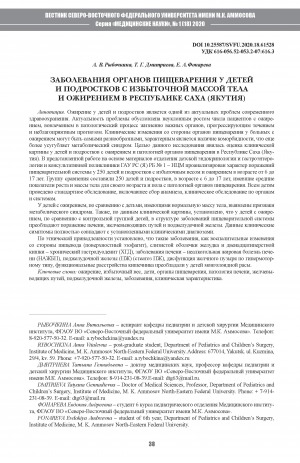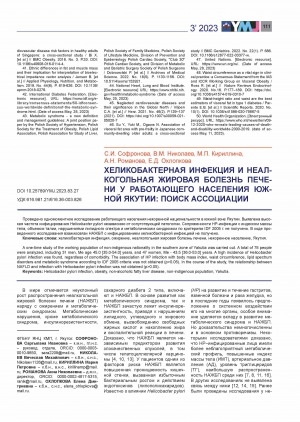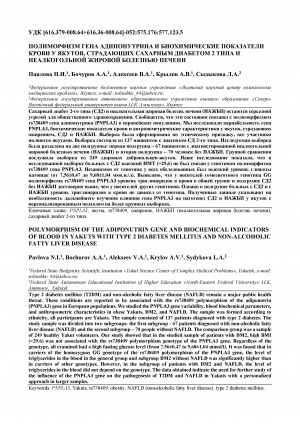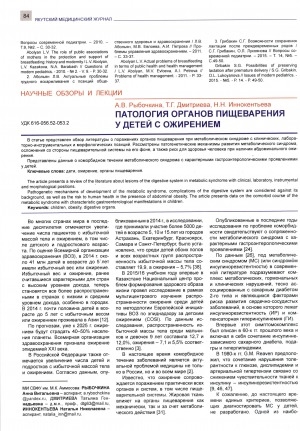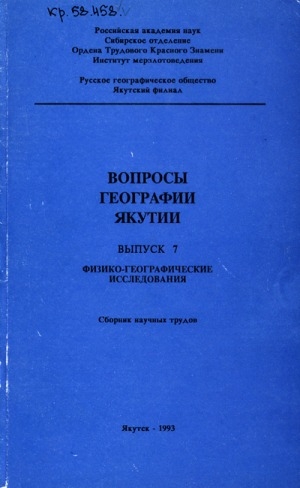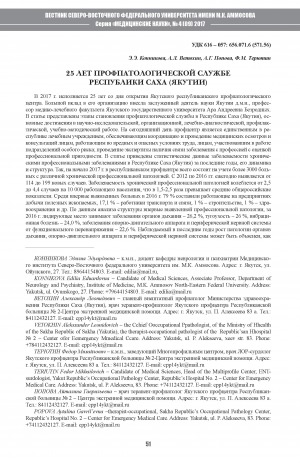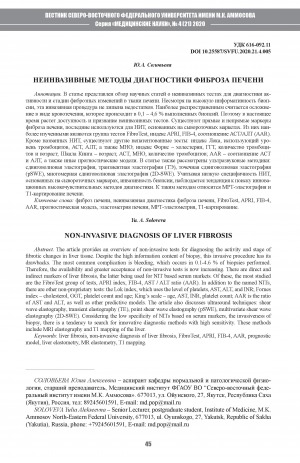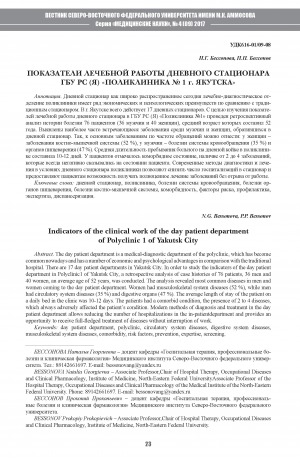Ожирение у детей и подростков является одной из актуальных проблем современного здравоохранения. Актуальность проблемы обусловлена неуклонным ростом числа пациентов с ожирением, вовлечением в патологический процесс жизненно важных органов. Клинические изменения со стороны органов пищеварения у больных с ожирением могут быть самыми разнообразными, характерным является наличие коморбидности, что еще более усугубляет метаболический синдром. В статье показана тесная взаимосвязь ожирения и поражения органов пищеварения у детей и подростков Республики Саха (Якутия). В представленной работе проанализирован характер поражений пищеварительной системы у 250 детей и подростков с избыточным весом и ожирением в возрасте от 3 до 18 лет, по материалам отделения детской эндокринологии и гастроэнтерологии и консультативной поликлиники ГАУ РС (Я) РБ ө 1 - НЦМ. Всем детям проведено стандартное обследование, включавшее сбор анамнеза, клиническое обследование по органам и системам, лабораторно-инструментальную диагностику (общий и биохимический анализы крови, анализ мочи, анализ крови на гормоны, УЗИ органов брюшной полости, фиброэзофагогастродуоденоскопия (ФЭГДС), осмотры специалистов по показаниям). Установлено преобладание избыточного веса и ожирения у мальчиков, преобладание подросткового возрастного этапа в группе обследованных детей. Отмечена связь морбидного ожирения у детей коренного населения РС (Я). Установлено, что при ожирении у детей в структуре заболеваний пищеварительной системы преобладают поражение печени и желчевыводящих путей. С увеличением степени ожирения нарастает частота развития неалкогольной жировой болезни печени. Стеатоз поджелудочной железы встречался с одинаковой частотой во всех группах у детей, как с избыточным весом, так и с ожирением. Отмечена взаимосвязь избыточной массы тела и ожирения с воспалительными изменениями со стороны слизистой оболочки пищевода, желудка и двенадцатиперстной кишки в виде эзофагита, хронического гастродуоденита, а также с функциональными расстройствами кишечника (запоры, диарея)
Obesity in children and adolescents is one of the urgent problems of modern health. The urgency of the problem is due to a steady increase in the number of patients with obesity, involvement in the pathological process of vital organs. Clinical changes on the part of the digestive organs in patients with obesity can be very diverse, characteristic is the presence of comorbidity, which further exacerbates the metabolic syndrome. The article shows a close relationship between obesity and the defeat of the digestive system in children and adolescents of the Sakha Republic of Sakha (Yakutia). In the present work, the nature of lesions of the digestive system was analyzed in 250 children and adolescents with overweight and obesity aged 3 to 18 years, according to the materials of the Department of Pediatric Endocrinology and Gastroenterology and the Consultative Polyclinic of the State Agency of the Sakha Republic of Sakha (Yakutia) RHB No. ө 1- NCM. All children underwent a standard examination, including a history, clinical examination of organs and systems, laboratory and instrumental diagnostics (general and biochemical blood tests, urinalysis, hormone analysis, ultrasound of the abdominal cavity, fibroesophagogastroduodenoscopy (FEGDS), examinations of specialists according to indications). The prevalence of overweight and obesity in boys was established, the predominance of the adolescent age in the group of children surveyed. The connection of morbid obesity in children of the indigenous population of the SRRS (Y) is noted. It was established that obesity in children in the structure of diseases of the digestive system is dominated by liver and bile duct disease. With the increase in the degree of obesity, the frequency of non-alcoholic fatty liver disease increases. Steatosis of the pancreas was found with the same frequency in all groups in children, both overweight and obese. The relationship between overweight and obesity with inflammatory changes in the mucosa of the esophagus, stomach and duodenum in the form of esophagitis, chronic gastroduodenitis, as well as with functional disorders of the intestine (constipation, diarrhea) washas been noted


